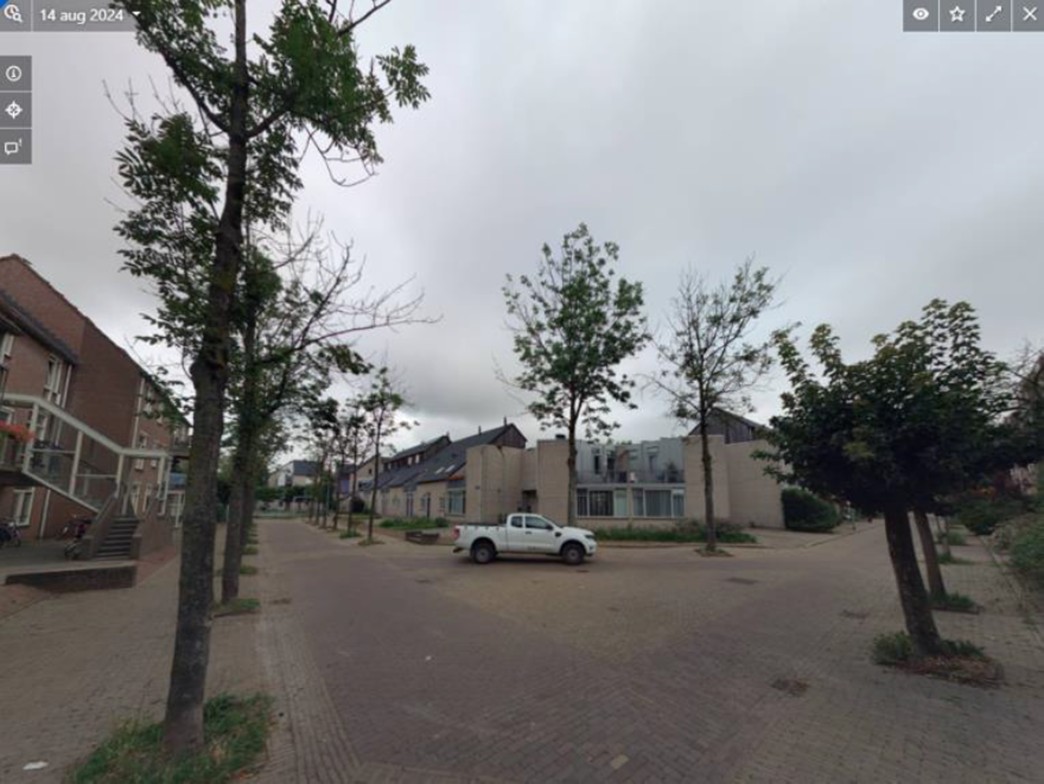Middelburg’s Edelstenenbuurt, a neighbourhood classified as a deprived area, is embarking on a journey of transformation through the Cool Neighbourhoods project. Originally developed in the 1980s, this area was not designed with climate adaptation in mind and now faces significant socio-economic and environmental challenges. With extensive paved surfaces, limited greenery, and a lack of spatial quality, Edelstenenbuurt struggles with heat stress and a dilapidated appearance, making the need for climate adaptation both urgent and complex.
The Challenges: A Complex Landscape
Edelstenenbuurt’s socio-political and economic landscape presents unique hurdles:
- Socio-Economic Vulnerability: High levels of social deprivation and economic constraints limit the resources available for large-scale interventions.
- Environmental Exposure: The area’s extensive paving exacerbates heat stress, reducing liveability and comfort for residents.
- Legal and Ownership Issues: Complications related to housing corporations add complexity to implementing widespread changes.
- Community Engagement: Ensuring inclusive participation in climate adaptation efforts requires culturally sensitive approaches.
Despite these challenges, there is growing political awareness of the need for climate adaptation, providing a foundation for incremental progress.
Pilot Focus: Small-Scale, Cost-Effective Interventions
The Edelstenenbuurt pilot focuses on practical, community-driven measures to improve liveability and resilience. Key strategies include:
- Greening Initiatives: Depaving unnecessary paved areas and introducing mobile greenery to cool public spaces and enhance spatial quality.
- Shade Creation: Installing shade structures and planting trees to provide relief from heat stress.
- Infrastructural Coordination: Aligning greening efforts with ongoing assessments of cables and pipes to ensure cost-effective implementation.
Addressing Social and Environmental Needs
Edelstenenbuurt’s transformation is not just about physical changes; it’s about fostering community engagement and ownership:
- Culturally Sensitive Strategies: Using visual communication and local leaders to encourage participation in climate adaptation initiatives.
- Community Stewardship: Fostering local ownership of public spaces through engagement with youth groups, introducing surveillance measures, and using vandal-resistant designs.
Harnessing Technology for Resilience
Accessible and easy-to-use technologies are critical to combating heat stress in Edelstenenbuurt. These solutions will be tailored to suit the socio-economic realities of the community, ensuring they are practical and effective.
Building Long-Term Success
The Edelstenenbuurt pilot is designed with sustainability and scalability in mind. Steps to ensure lasting impact include:
- Targeted Social Outreach: Integrating climate adaptation with broader community improvement strategies to address immediate socio-economic concerns.
- Monitoring and Evaluation: Establishing systems to measure the success of interventions and guide their expansion over time.
The Path Ahead
Edelstenenbuurt’s transformation marks an important step towards creating a climate-resilient future for Middelburg. By implementing small-scale, cost-effective measures and prioritising community involvement, this deprived area is set to become a model of how neighbourhoods can adapt to climate change while addressing social and economic challenges.
Stay tuned as the "From Grey to Green" series documents Edelstenenbuurt’s progress, showcasing how innovative solutions and engaged communities can turn challenges into opportunities for a brighter, greener future.
Image: The Middelburg Deprived Pilot to be Transformed.
